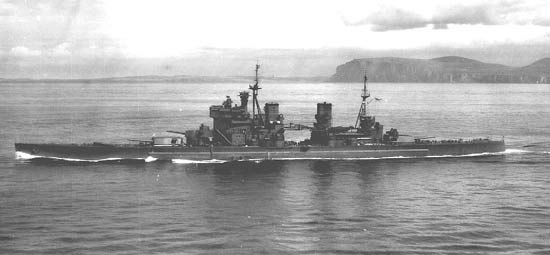General Discussion
Related: Editorials & Other Articles, Issue Forums, Alliance Forums, Region ForumsFury as Chinese scavengers desecrate war graves
of 840 Royal Navy sailors killed in WW2.

Chinese-flagged dredger implicated in the desecration of Royal Navy sailors' war graves.
Chinese scavengers have violated the sanctity of the war graves of 840 Royal Navy sailors. Individuals from China illegally extracted remnants of wreckage from the sunken World War 2 ships, HMS Prince of Wales and HMS Repulse which were targeted by Japanese torpedo bombers near the Malaysian coast, a mere two days after the attack on Pearl Harbor in 1941.
These wrecks hold the status of being designated British war grave sites and are meant to be safeguarded.
Photographs obtained by The Sun show the immense dredger named Chuan Hong 68 in the vicinity of the wrecks.
This vessel operates under the Chinese flag and has previously been associated with unauthorized salvage operations.
Hazz Zain, a diver who helps preserves the wrecks said: "The barge was being circled by a small boat.
HMS Prince of Wales

MORE >
https://www.express.co.uk/news/world/1774103/Chinese-scavenger-war-graves-Royal-Navy#conversation-wrapper
The Chinese scour the planet raising wrecks for this easy source of refined steel.
About a decade ago, a chinese barge traveled a long way to raise a grain transport ship that sunk at the Mayagüez, PR pier.
efhmc
(15,865 posts)EYESORE 9001
(29,260 posts)Alexander Of Assyria
(7,839 posts)Twitter level speculation from Twitter level newspaper.
localroger
(3,776 posts)Nearly all new steel is contaminated with trace amounts of radioactivity from above-ground nuclear tests. This isn't noticeable in normal use but it's very important for certain medical and scientific applications, and this "low rad" steel is considerably more valuable than new steel because they literally can't make it any more.
dalton99a
(90,950 posts)The Worldwide Scavenger Hunt For Vintage, Low-Radiation Metals
The quest for precious metals has led scavengers to rip up old railways, raid sunken battleships, and disturb centuries-old artworks in the name of science.
Jed Oelbaum
05.10.18
While most people wouldn’t be too excited about anything that came out of a sewer, Phillip Barbeau, a professor of physics at Duke University, tells me enthusiastically about 3 tons of lead that was recently pulled from Boston’s waste system. The metal, once used to seal pipes, is one of his more promising potential sources of “low-background” lead for his experiments. It’s now sitting at Los Alamos National Laboratory, the birthplace of the atomic bomb.
Low-background metals — most famously steel and lead — are valuable because they carry particularly low levels of radiation compared with most conventional materials. Used as shielding in advanced particle physics projects and for medical science devices like X-ray chambers, these metals won’t interfere with specialized, highly radiation-sensitive environments and tools.
The quest for these metals has led researchers, governments, and corporations to rip up old railways, raid sunken battleships, and disturb centuries-old artworks in the name of science.
Barbeau’s low-background steel supply, for example, is surplus World War II armor-ship plating that came from the Norfolk Navy Shipyard and was donated to Duke many years ago. His top source for low-background lead is a University of Chicago stockpile sourced from a 300-year-old sunken British ship. The lead, he says, “showed up with barnacles still on it.”
While some low-background materials can be freshly produced (like copper), the easiest route to most of these substances is a kind of scavenger hunt for metal manufactured before humans first split the atom.
....